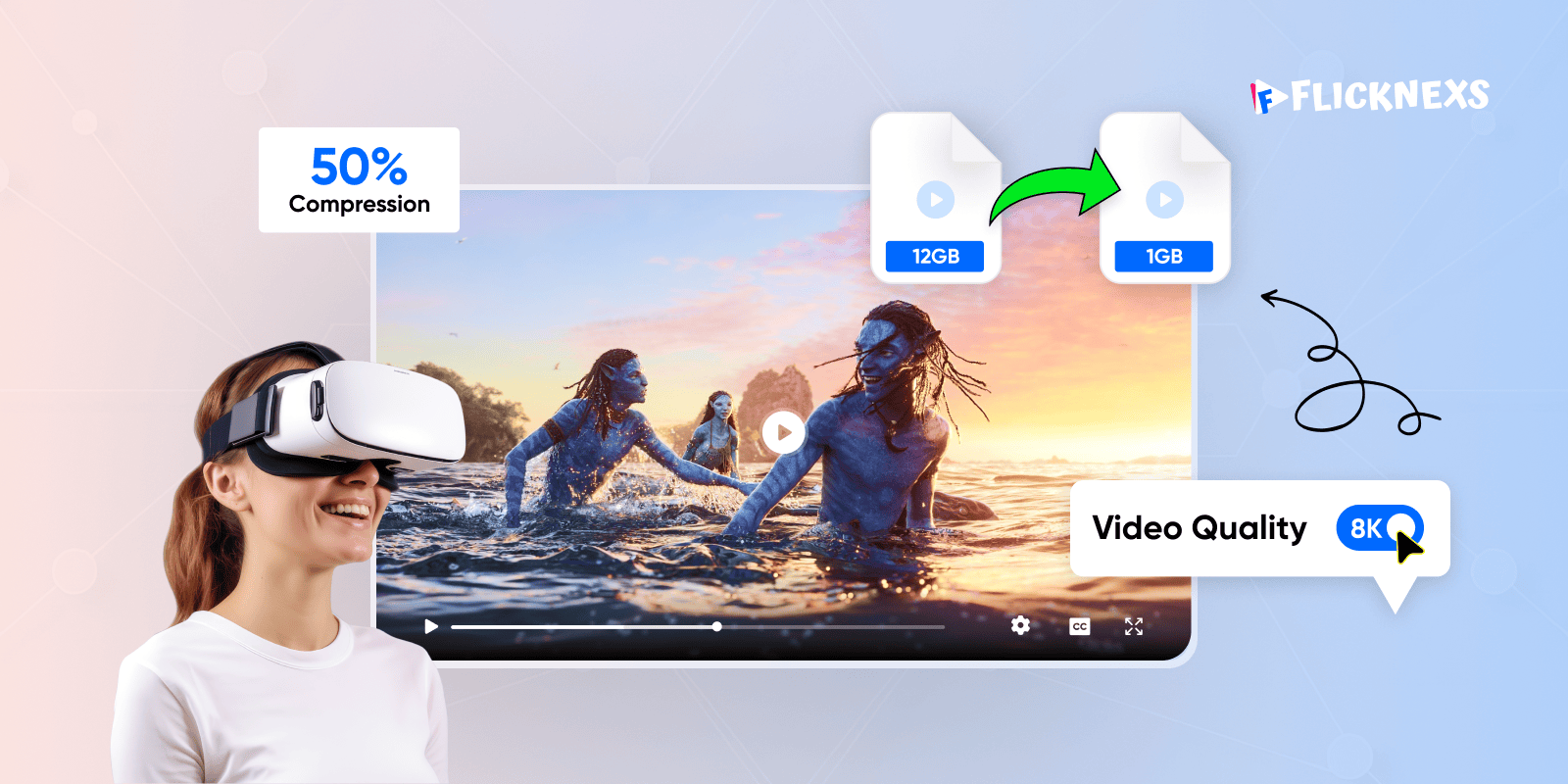The streaming world is changing at lightning speed. Every few years, we see breakthroughs that redefine how billions of people around the globe consume video. From the rise of YouTube powered by H.264 to the 4K revolution enabled by H.265, each leap in video technology has shaped how entertainment, sports, education, and news are delivered.
Now, a new milestone has arrived: the launch of the world’s first H.266/VVC powered OTT engine. This is not just another incremental improvement — it’s a massive shift that will influence the future of streaming for the next decade and beyond.
For viewers, it means better quality and less buffering. For businesses, it means lower costs and wider reach. And for the industry as a whole, it means new opportunities to bring ultra-high-definition and immersive experiences to audiences everywhere.
So, what exactly is H.266/VVC (Versatile Video Coding)? Why is this announcement such a big deal? And what does it mean for the OTT industry, from established giants to startups just entering the space? Let’s explore.
What is H.266/VVC and Why Does it Matter for OTT?
Evolution of Video Codecs (H.264 → H.265 → H.266)
At the heart of streaming lies a simple challenge: how do you deliver the best possible video quality using the least possible data? This is where codecs come in.
- H.264/AVC (2003): This codec made HD streaming mainstream. It allowed YouTube, Netflix, and other platforms to expand rapidly by balancing decent quality with manageable file sizes.
- H.265/HEVC (2013): As 4K video emerged, H.265 became the standard. It offered nearly 50% better compression than H.264, making UHD content streamable for the first time at scale.
- H.266/VVC (2020): Developed by the Fraunhofer Heinrich Hertz Institute and global partners, H.266 is the codec designed for today’s and tomorrow’s streaming needs: 4K, 8K, VR, AR, HDR, and immersive video.
Each new generation of codecs has unlocked a wave of innovation. Without H.264, YouTube wouldn’t have scaled. Without H.265, 4K Netflix would have been impossible. And now, H.266 promises to make ultra-HD and immersive streaming practical and affordable for billions of people.
What Makes H.266/VVC Different?
H.266/VVC is not just a technical upgrade — it’s a rethinking of how video compression can serve the needs of a global audience that increasingly demands quality, speed, and accessibility.
Key differentiators:
- 50% better compression: H.266 halves the bandwidth needed compared to H.265. A 4K film that needed 10 GB with HEVC might need only 5 GB with VVC.
- Ready for 4K, 8K, and beyond: Unlike previous codecs that had to adapt to new formats, H.266 was built for ultra-HD from day one.
- Support for immersive media: VR, AR, 360° video, and even metaverse content will work seamlessly.
- Optimized for mobile: Many global users access streaming via mobile networks, often unstable. H.266 ensures smoother playback, even on weaker connections.
- Future-proof design: With rising adoption of HDR, wide color gamut, and next-gen display tech, H.266 ensures OTT platforms won’t need another immediate codec switch.
For OTT businesses, the message is clear: deliver higher quality content at a lower cost and reach more users across devices and networks.
The Announcement – World’s First H.266/VVC Powered OTT Engine
The big news is not just that H.266 exists — it’s that the world’s first OTT engine powered by H.266/VVC has officially launched. This marks the first real-world implementation of the codec in a commercial-grade engine designed for streaming platforms.
Why this matters:
- Until now, H.266 was confined to research and prototypes.
- With this engine, OTT platforms can deploy VVC in production environments.
- It demonstrates a blueprint for broadcasters, startups, and enterprise-grade platforms to adopt this technology without starting from scratch.
Who benefits from this launch?
- OTT Platforms: Services like Netflix, Disney+, or regional players can reduce costs and improve user experience.
- Broadcasters: As TV shifts to digital-first, broadcasters need cost-efficient UHD delivery.
- Sports & Live Streaming: Sports fans demand smooth, real-time UHD. H.266 enables this without overwhelming networks.
- Startups & Niche Platforms: Smaller players can now deliver premium-quality video without massive infrastructure budgets.
This announcement essentially signals the beginning of global H.266 adoption in the OTT industry.
Key Benefits of H.266/VVC for OTT Platforms
The strength of H.266 lies in its ability to balance technical efficiency with real-world impact. Let’s expand on its benefits:
1. Better Compression → Lower Bandwidth Costs
Bandwidth is one of the largest expenses for OTT providers. Imagine a global platform streaming billions of hours each month. Cutting file sizes in half can save millions of dollars annually.
Example:
- A 2-hour 4K movie encoded in H.265 = ~10 GB.
- Same movie encoded in H.266 = ~5 GB.
Multiply that across millions of viewers, and the savings are massive.
For startups, lower delivery costs can mean the difference between scaling profitably and struggling to survive.
2. Higher Quality Streaming (4K/8K) Without Buffering
User frustration often comes down to buffering. Research shows that viewers abandon streams if buffering occurs more than once.
H.266’s efficiency means that even 8K video streams smoothly at reasonable bitrates. Live concerts, esports, or blockbuster movies can now reach audiences without compromising quality.
3. Improved Mobile Performance for Emerging Markets
Emerging markets represent the fastest-growing segment of OTT users. However, limited bandwidth often forces platforms to cap quality.
With H.266:
- A user on a 3G/4G network could still watch content in HD or even UHD.
- Mobile-first markets like India, Nigeria, and Brazil can enjoy premium streaming without heavy data costs.
This unlocks new audiences and revenue streams for OTT businesses.
4. Scalable for Future Innovations (VR, AR, Immersive Content)
OTT is no longer just about TV shows and movies. The next frontier is interactive, immersive content — VR concerts, AR learning modules, metaverse experiences.
H.266 was built to handle these formats. It ensures that when OTT platforms pivot into immersive entertainment, they’ll already have the right foundation.
5. Environmental Benefits of Efficiency
Streaming consumes huge amounts of global bandwidth and energy. By halving data needs, H.266 contributes to lower energy consumption across networks and data centers.
For companies focused on sustainability, this is a big win: lower carbon footprint, reduced costs, and a greener approach to entertainment.
What This Means for the Future of Streaming
The launch of the first H.266-powered OTT engine is more than just a tech milestone — it’s the starting gun for a new streaming era.
Adoption Timeline
Like all codecs, H.266 will take time to achieve mainstream adoption. Devices, browsers, and players will need updates. Hardware manufacturers will need to integrate decoding support. Experts predict 3–5 years before H.266 is fully widespread.
But the clock has already started. The first OTT engine launch is the spark that pushes the industry into adoption mode.
The Competitive Edge of Early Adopters
History shows that first movers often dominate. Netflix leveraged H.264 early to scale globally. Platforms that embrace H.266 now will stand out with:
- Higher quality streams than competitors.
- Lower subscription costs (thanks to reduced delivery expenses).
- Wider reach into new geographies and devices.
For startups, this is a chance to compete with giants on a level playing field.
A New Chapter for OTT Globally
The global OTT market is projected to surpass $400 billion by 2030. But growth depends on delivering higher quality without unsustainable costs. H.266 could be the very technology that allows this expansion.
Imagine:
- A classroom in rural Africa watching 4K educational content on low bandwidth.
- Sports fans in Brazil streaming 8K football matches live.
- Viewers in the US enjoying lag-free VR concerts.
These aren’t distant possibilities. They’re the direct implications of H.266 adoption.
Conclusion
The launch of the world’s first H.266/VVC powered OTT engine is a landmark moment in the history of streaming. Much like H.264 and H.265 defined the past 15 years of video, H.266 will define the next decade.
By offering:
- 50% better compression
- Flawless 4K/8K delivery
- Improved mobile performance for global users
- Scalability for VR, AR, and immersive experiences
…it doesn’t just make streaming more efficient — it makes it more accessible, affordable, and future-proof.
For OTT platforms, broadcasters, and startups, the message is simple: those who embrace H.266 early will lead the next chapter of streaming. For viewers, the reward is richer experiences, less buffering, and more freedom to enjoy content anywhere, anytime.
The future of streaming is here, and it’s powered by H.266/VVC.



Leave a Reply